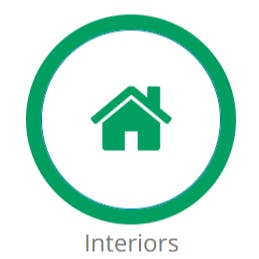Where we operate
Medical facilities
Increase of microbial purity, elimination of risks of transmission of contact diseases, protection of patients, doctors, staff and visitors.
Interiors
Elimination of risks of contact disease transmission, creation of hypoallergenic environment, elimination of volatile organic substances in the air.
Sports equipment
Elimination of risks of transmission of contact infections, elimination of bacteria, viruses, fune, elimination of odors.
Public transport
Automotive
Food industry
Industrial applications
Construction
Projects
Application partners
CLEANING OF CAR INTERIORS WITH NANOTECHNOLOGY APPLICATIONS
Areas of application
Medical facilities
We offer hygienic measures to increase and maintain cleanliness, protect patients, doctors, staff and visitors.
Example of normal terminal cleaning
Conventional cleaning of the terminal means cleaning the surrounding environment with disinfectants, carried out after the release of an infectious patient. The subject of cleaning is horizontal surfaces – bed, mattress and pillow, including grates, patient bedside cabinet, infusion stand, wardrobe for clothes so that they are hygienically safe.
The window and wall surfaces are cleaned with the ingestion of the appropriate cleaning agents. The sink is cleaned with phenol-based disinfectants so that it is hygienically safe. Drawers and cabinets are emptied and cleaned using quaterary ammonium compounds used for normal purposes and allowed to dry in the air. Curtains are washed at 70 ° C in the cycle of washing, drying and ironing, and new curtains are in the package after washing. The bins are emptied and the surfaces inside and outside are cleaned with conventional disinfectants. Then rinse with water and allow to dry.
General deficiencies in commonly used cleaning and disinfection methods
② commonly used disinfectants and cleaning agents do not show any long-term sterilization effects. After the chemical reaction has run and the surface has dryed out, the sterilization effects will cease.
④ on the areas treated in this way, the pathogens are subsequently repopuled (due to fallout...)
Economic shortcomings of commonly used cleaning and disinfection methods
Photocatelytic nano materials and their benefits
② TiZonic is completely transparent, it can also be used on mirrors, shiny stainless steel surfaces, etc.
③ TiZonic treated surfaces have a proven self-cleaning function – self-cleaning effect.
④ Another advantage of TiZonic is that it prevents dew (creating fog) in warm and humid environments such as bathrooms.
⑤ TiZonic creates an innovative system of maintaining high hygiene standards without human intervention.
⑥ TiZonic creates a safer environment for human health as part of the hygiene management system, which also means that regular maintenance and cleaning, sanitation processes can be reduced and thus reduced costs related to the workforce used.








